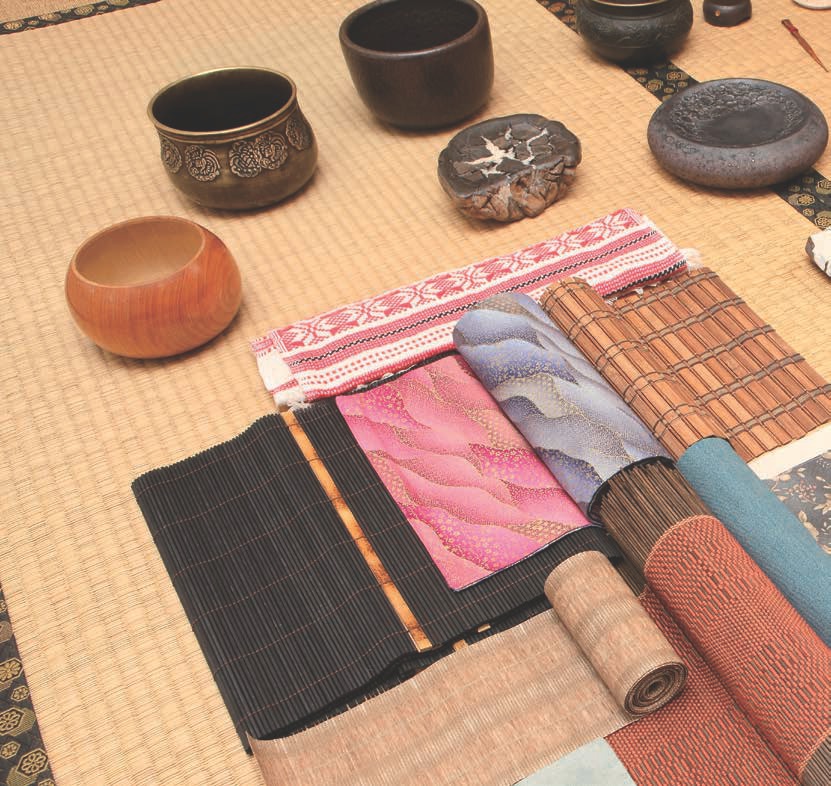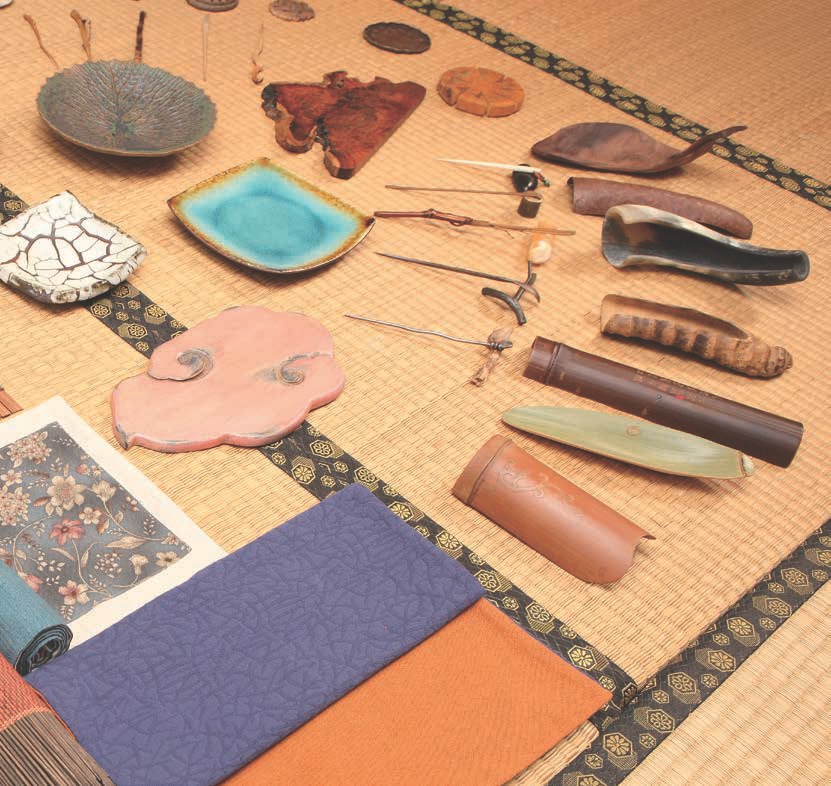
 |
|
If we want to invite more Tea into our lives, we need to expand our definition of what Tea is, rather than just increasing the frequency of doing one particular activity. Though in one practical sense, the practice of chaxi is done directly on the tea table, it requires us to consider many factors outside the tea space, even at the rudimentary level.
Let us broadly consider the term "chaxi", as it literally translates: "tea stage." Like in all tea practices, working with your tea stage is an expression of your state of mind, not to be confused with an expression of your self. Though an aspect of yourself will inevitably come through in the final expression, it is not the goal of a chaxi to express the self. We might simply say the goal of a chaxi is to create a harmonious setting that honors the communion between guest, host, and Nature in a chance encounter over tea.
First and foremost, we must create space! This is the first thing anyone must do in order to invite Tea into their lives. The type of Tea that finds Her way into your life will be directly related to the space in which you create for Her. So, if our tea stage is to honor our self, our guest, Great Nature, and in fact all our brothers and sisters in Tea, as well as all the saints and sages of the past, present, and future, it must first be cleared and cleaned! On the surface level, this means cleaned of any dust and debris. In other words, physically cleaned. On the inner level, this means cleared energetically, from all past tea sessions that might cause us to forget that this tea session right here and now is both our first and last. It is our demonstration to the Universe that we acknowledge the uniqueness of this time together. It is a cleaning off of the dust of the world and worldly matters, purifying ourselves in preparation for a once-in-a-lifetime encounter. Nothing is more important! It might sound cheeky, but another very good introductory article on tea could cover the art of cleaning and tidying. And let us remember that one of the Eight Bowls of a Life of Tea in this tradition directly addresses cleanliness and purity.

"Without anxious thought, doing comes from being."
Once you have a clean stage upon which to practice, the next most important step is the same as with chabana, being before doing. Remember, this is both the ending of the last tea session and the beginning of the next. Expand your definition of the tea ceremony. You are always drinking tea. By being present, you prepare yourself for the next moment and honor the last.
How you act now will play a very influential role in the unfolding of the tea ceremony. What you lay out on the table will be a demonstration manifest of your state of mind.
This might sound a little extreme, but really, it's a matter of heart. If we are to live a true life of Tea and Zen we must fervently seek the balance that strives towards perfection, and yet rains compassionately on all shortcomings. Life is fleeting, and this expression of beauty and art on the table could very well be the last mark you make on this Earth... Take a few breaths, quiet the mind, and envision your chaxi.
"Instead of thinking through the question that life is confronting you with, sit quietly and let your thoughts settle down. Allow the answer to emerge spontaneously from your intuition without unnecessary deliberation. Go straight to the solution."
As with choosing a suitable tea for each ceremony, the design of our chaxi should strike a balance between certain practical factors and our intuition. It is always helpful to consider details, such as the time of day, the weather, the season, the number of guests, bowl tea or gongfu tea, etc. In fact, in the beginning, most of us will lean towards using these details to design our tea stage. But it's just as important to begin an internal dialogue between your, the space, the accoutrements to be used for the occasion, and the spirit of the Leaf. There is then less "me" in the design and more tea spirit, as it should be.
Though you may think yourself limited by having a small selection of tea stage elements, this is actually a good place to start. Having less to work with is actually an advantage in the beginning, just as it is advantageous to start with bowl tea, requiring only leaves and hot water in a bowl. With less parameters to consider, we can more easily connect to the spirit of what we are doing, and also as with bowl tea, the spirit of chaxi lies in simplicity and balance. With this as our foundation, it will be easier to work towards more elegant and refined chaxi layouts in the future, just as we progress to the more refined and complex brewing method of gongfu tea after first brewing bowl tea for a long time. As we so often say around here, advanced techniques are basic techniques mastered!
There are many chaxi elements to choose from and countless combinations to create. Luckily, many of your Global Tea Hut gifts can be put to use here! But as I said, you will want to start simple and work with less in the beginning, challenging yourself to be as creative as possible to suit each occasion. Not that elegance and aesthetics are forbidden from the tea stage, but in the beginning we must first "forget the bowl and remember the soul." A stage with too many fancy items, items used out of harmony, or items that seem forced will yield a disharmonious or distracting feeling at the table. Like with chabana, utilization of space is not easy and also very important. Deciding to fill an open space or not can make or break a chaxi. Therefore, working on a smaller stage with simple elements is easier.


Ironically, some of the chaxi layouts that I have received the most praise for from friends are the ones that my teacher scolds me for the most. This is not to say my friends have poor taste, but rather, highlights the fact that what my chaxi did was excite the mind rather than draw it inward for silent contemplation. Simplicity is so important in the beginning! I have seen too many stages for tea (including many of my own) that were overly concerned with color combinations, elegant items, and sentimentality, which more than likely stemmed from an unconscious desire to seek attention. Walking this path of tea is not about being at the center of the stage but creating it for a higher purpose. It is about service, transformation and connection, and all ultimately for the benefit of others. We are not here to receive praise for our efforts but to honor the occasion. That is why stepping out of the way and purifying the self is so important, as the chaxi can then come through us rather than from us.
There are no set rules to laying out elements on your tea stage. After sitting quietly, I often start by choosing a runner in harmony with my chosen theme and all of the aforementioned factors. I usually use a cloth or bamboo runner or perhaps a wooden board suitable for tea. At this point, everything depends! You must choose wisely between tea boats, scoops and sticks, lid rests, miniature statues, bonsai, leaves and petals, water features, flowers, rocks, etc. Of these, maybe the most important item to work with is some sort of centerpiece to highlight your tea pot and bring focus and symmetry to the center of the stage, reminding us why we're all here! That might be a low and rustic plate, or the more elegant rattan we sent out last month, among many other options.
During this process, I always sit down a number of times and get a feel for how everything is unfolding. I put myself in the guest's position and contemplate how they might experience this chaxi. There comes a point at which you either feel satisfied or not. Feeling satisfied is easy to understand, just as when you level a scroll or hang a picture in the perfect spot - everything just clicks into place and you know it's in harmony. This happens when you are calm, respectful, and heartfelt. When you feel unsatisfied, however, you can take something away, add something, or change everything! More often than not, when my teacher corrects and adjusts my chaxi, he takes something away or has me start over.
Finish your chaxi in a timely, calm fashion. Obviously, do not rush such an endeavor, but also don't get caught up thinking too much. Stay centered, find your breath throughout, and work single-mindedly. When the tea begins, everything is perfect just as it is. But each time, ask yourself, is this your best effort?
How you finish anything is how you start the next thing. Just as we started by cleaning our stage, so too we end by cleaning. Gratefully, clear everything away. Do yourself and your guests a favor and make a new chaxi for every occasion! Be diligent! In doing so, you will notice the stagnation that sets in even after using the same chaxi only twice, and furthermore, your actions will be in harmony with the fact that this very encounter will only happen but once in our lives. And so, to honor this significant occasion, we arrange our chaxi.

